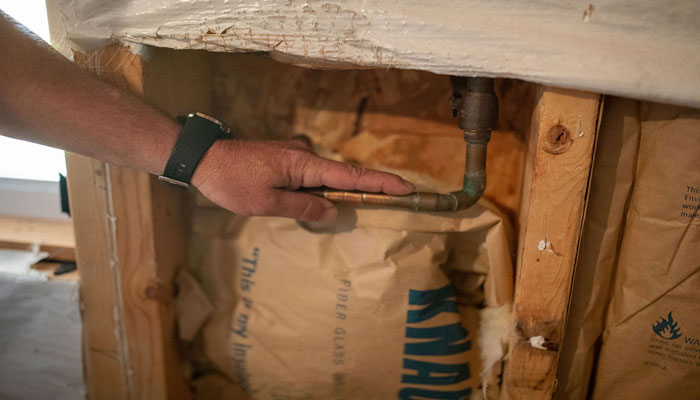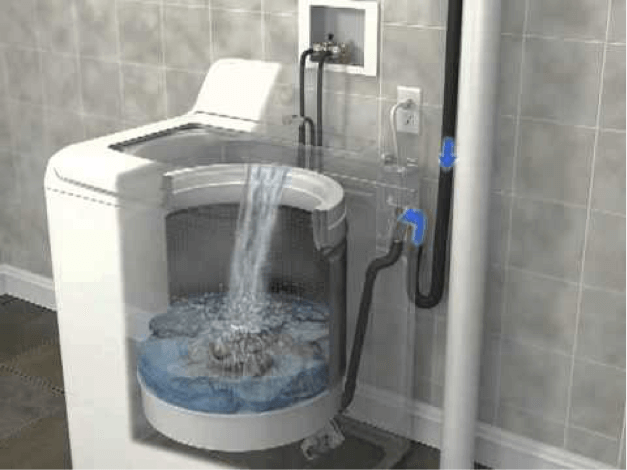Spotting and Quickly Fixing a Broken Pipe: A DIY Approach
Spotting and Quickly Fixing a Broken Pipe: A DIY Approach
Blog Article
Every person seems to have his or her own beliefs in relation to How to install a dishwasher safely.

A ruptured pipe is a major emergency; you can just stand as you watch water you pay dearly to reunite with the planet. In even worse cases, you discover a swimming pool on your cooking area flooring, which is a fantastic trip danger, particularly if you have kids around. If the pipe that ruptured was in your walls, problem: you may need to paint that entire area.
Just how can a disaster like a ruptured pipe be prevented and taken care of? Well, by paying attention to your specialist emergency plumbing professionals and also complying with these guidelines.
How do I know when my pipes have ruptured?
Rising and fall water stress
Pipelines do not just burst in a day. You might have observed that your kitchen area faucet or shower doesn't run immediately when you transform the faucet. It might stop briefly for a few secs and then blast you with even more force than common.
In other circumstances, the water may appear normal in the beginning, then decrease in stress after a few secs.
Wet walls and also water stains
Prior to a pipeline ruptureds, it will leakage, a lot of times. If this persistent dripping goes undetected, the leak may finish right into a broad tear in your pipeline. One easy method to prevent this emergency is to keep an eye out for wet walls ad water spots. These water discolorations will certainly lead you right to the leakage.
Puddles under pipelines and sinks
When a pipe bursts, the outflow forms a puddle. It may appear that the puddle is growing in dimension, and no matter how many times you wipe the pool, in a couple of mins, there's one more one waiting to be cleaned up. Typically, you may not be able to trace the pool to any kind of noticeable pipes. This is an indicator to call an expert plumber.
Untraceable leaking noises
Pipe ruptureds can occur in the most unpleasant areas, like within concrete, inside walls, or under sinks. When your home goes silent, you might be able to listen to an irritatingly relentless leaking sound. Even after you have actually inspected your shower head and cooking area faucet, the dripping might continue.
Beloved reader, the trickling may be originating from a pipe inside your walls. There isn't much you can do concerning that, except inform a specialist plumber.
Turn off the Water
When water ices up, it increases in volume by regarding 9 percent. And also it expands with incredible pressure: The pressure inside pipes may go from 40 extra pounds per square inch to 40,000 psi! No pipeline can hold that much stress, so it bursts. The break may occur where the ice forms, however more frequently, it takes place where water stress locates a weak point in the pipeline. That might be inches or perhaps feet from the icy location. Locate the water shutoff valve and also switch off the water to stop even more damages. You may likewise need to shut off the electricity too, depending on where the leakages happens and also exactly how big it is.
Contaminated water
Many people assume a ruptured pipeline is a one-way outlet. Quite the contrary. As water spurts of the hole or wound in your plumbing system, impurities discover their method.
Your water might be contaminated from the resource, so if you can, inspect if your water tank has any type of problems. Nonetheless, if your drinking water is provided as well as detoxified by the city government, you need to call your plumber promptly if you see or smell anything funny in your water.
What do I do when I detect a burst pipeline?
Your water meter will certainly continue to run even while your water wastes. To decrease your losses, find the primary controls and also turn the supply off. The water mains are an above-ground structure beside your residential or commercial property.
How to Fix & Detect a Leaking Pipe
How Do I Know if a Pipe is Leaking?
Leak detection tests can help you determine if your pipe has a leak. Even if you don’t see an apparent leak, you should still conduct leak detection tests regularly to save water and money—and prevent major damage to your home.
Water meter. It can be helpful to figure out what your usual water meter usage numbers are and then monitor them regularly. To monitor your meter, first, turn off all water faucets in your home. Check the meter and write down the numbers. In a few hours, check the meter again. If the numbers have changed, you have a leak. Water gauge. Use a water gauge to test your water pressure. Your showerhead should produce a certain amount of water pressure based on its model and design. If the pressure is lower than it is supposed to be for that specific showerhead, your home likely has a leak. Puddles. Look inside your bathroom, laundry, and kitchen sink cabinets. Puddles around the cabinets or around toilets, tubs, showers, and washing machines indicate the presence of a leaking pipe. You may also notice loose tiles, peeling or flaking paint, or mold caused by water accumulation. Napkin test. Even if you don’t see any puddles, you may still have a leak. You can test for water leaks in the bathroom, laundry, and kitchen by wiping below-sink connections with a napkin, paper towel, or piece of toilet paper. If it becomes damp, you probably have a leaking pipe under the sink. Discolored walls. Walls that are discolored—usually with brown or yellow stains—or bulging might mean that they have been impacted by water damage caused by a leaking pipe. Smell. A leaky pipe will create sitting water, and over time, that water may develop a musty smell. If your home smells musty, but you can’t locate the source, it may be due to a leak. Steps for Fixing a Leaking Pipe
A leaky drain can be remedied by tightening the pipe base, replacing the drain seal, caulking the rim, and tightening the pipe nut. Similarly, a leaking toilet pipe can be treated by tightening the packing nut. You may also need to replace the valve. A leaky faucet may just need tightening or replacement of the washers. If that doesn’t work, consider replacing your faucet. If your pipe has a hole in it, you may want to use a pipe leak sealer or pipe leak tape. This quick fix for water pipe leaks can also temporarily fix a copper pipe leak. https://www.ahs.com/home-matters/quick-tips/how-to-tell-if-pipes-are-leaking/

I stumbled upon that content about How to Install and Connect a New Dishwasher when browsing the web. Sharing is nice. Helping others is fun. We love reading our article about How to install a dishwasher safely.
Rely on our emergency expertise. Report this page